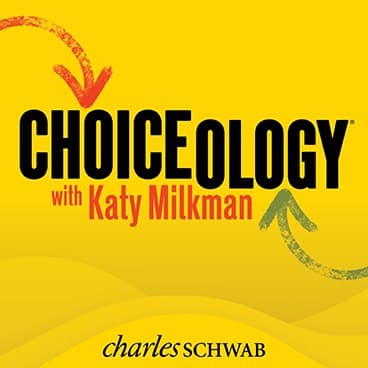The Mystery of Chance: With Guests Andy Marocco & Tom Gilovich
Have you ever seen a cloud overhead that looks very much like, say, a rabbit? Or maybe you've found a potato chip that had an uncanny resemblance to Elvis, or a cornflake that was almost exactly the shape of the state of Texas. What are the chances?
In this episode of Choiceology with Katy Milkman, we explore curious events and mysterious patterns in order to reveal the human habit of ascribing meaning to randomness.
- Andy Marocco of the Naval Air Station Fort Lauderdale Museum joins Katy to revisit some of the most famous and enduring unsolved air and naval mysteries that have occurred inside the "treacherous" Bermuda Triangle. You'll hear about several famous disappearances, with a focus on the harrowing tale of Flight 19 in which several planes and airmen vanished without a trace.
- Next, we conduct a simple experiment—or is it a magic trick?—involving a series of coin tosses. Our game master will attempt to identify a truly random list from a pile of imposter lists, using nothing but mental prowess. (If you're still skeptical about how "lumpy" randomness is, just notice how many possible outcomes of four coin flips include either three heads or three tails in a row: HHHH, HHHT, HHTH, HHTT, HTHH, HTHT, HTTH, HTTT, THHH, THHT, THTH, THTT, TTHH, TTHT, TTTH, TTTT.)
- Then we hear from Cornell University psychology professor Tom Gilovich about randomness as it pertains to iPods, jellybeans, faces, and canals on Mars.
- Finally, Katy Milkman offers tips on how basic statistical analysis can help you make better decisions.
Choiceology is an original podcast from Charles Schwab.
If you enjoy the show, please leave a rating or review on Apple Podcasts.
Learn more about behavioral finance.
Explore more topics
All expressions of opinion are subject to change without notice in reaction to shifting market conditions.
The comments, views, and opinions expressed in the presentation are those of the speakers and do not necessarily represent the views of Charles Schwab.
Data contained herein from third-party providers is obtained from what are considered reliable sources. However, its accuracy, completeness or reliability cannot be guaranteed.
Apple Podcasts and the Apple logo are trademarks of Apple Inc., registered in the U.S. and other countries.
Google Podcasts and the Google Podcasts logo are trademarks of Google LLC.
Spotify and the Spotify logo are registered trademarks of Spotify AB.



